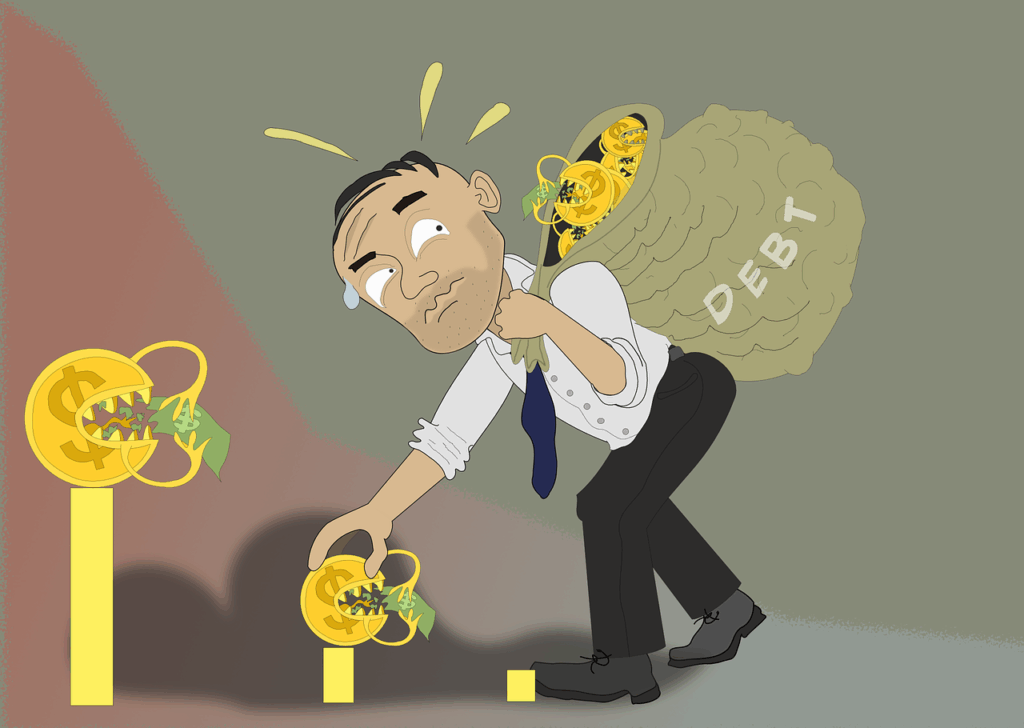
The allure of a new car is undeniable, a feeling of excitement that can often overshadow the practicalities of the purchasing journey. Driving off the lot in a brand-new vehicle is certainly enjoyable, but the process of getting to that point can be incredibly complex and, for many, quite stressful. From researching models to securing the best financing and navigating negotiations, there are numerous opportunities for missteps that could ultimately cost you a significant amount of money. It’s a business transaction, first and foremost, and preparation is absolutely key to ensuring you maintain the right mindset.
In today’s car-buying landscape, being well-informed is your greatest asset. While haggling might be seen as a lost art in many retail scenarios, it’s not only acceptable but often expected when purchasing a new car. Dealers, like any business, are looking to maximize their profit, and without proper knowledge and a strategic approach, buyers can easily find themselves agreeing to terms that aren’t in their best interest. This guide is designed to empower you with the insights needed to confidently approach the dealership experience, ensuring you get the best possible deal.
We’ve compiled a list of critical dos and don’ts, highlighting common mistakes and dealer tactics that can lead to unnecessary expenses. Understanding these points before you even step foot onto a car lot can transform a potentially overwhelming experience into a smooth, successful transaction. So, if you’re considering a new vehicle, make sure you’re equipped with this essential knowledge to steer clear of the behaviors and agreements that could make your next dealership car buying experience a nightmare.
1. **Going to a Dealership Without Pre-Approved Financing**
One of the most significant advantages you can give yourself in the car-buying process is securing your financing *before* you ever set foot in a dealership. Think of it like a strategic move in a negotiation: you always want to have the high ground, and a pre-approved financing offer from your own bank or credit union provides just that. This step is crucial because modern car dealers often generate a substantial portion of their revenue directly from their financing offices. They receive a cut from any auto loan they arrange for a buyer, which means the offers they present aren’t always the absolute best for you; they’re often the ones that yield the most profit for the dealership.
Without an external financing offer in hand, the dealership has little incentive to work hard to earn your financing business. You’re effectively walking into their territory without your own leverage. However, when you come in with a pre-approval, the dynamic shifts entirely. The dealer then has to actively compete for your business, needing to offer a better deal than what you already have if they want to handle that part of the transaction. This competition is where you, the buyer, win, potentially securing a lower interest rate or more favorable terms.
This principle applies even if you’re considering an electric vehicle (EV) or plug-in hybrid (PHEV) and plan to install a home charging station. Some banks may offer to roll the hardware and installation costs into your financing package. It’s always worth running the numbers to see if such an offer is more advantageous for you compared to alternative payment methods. The key takeaway here is clear: get pre-approved for a loan from your bank or credit union first. Compare those offers to what the dealer presents, and choose the option that truly serves your financial interests best.
By taking this proactive step, you’re not just getting a better rate; you’re also protecting yourself from potential dealer strategies like “yo-yo financing.” Knowing your financing options in advance empowers you to focus on the car’s purchase price and keeps the dealer honest, ensuring you receive a transparent and fair deal on all fronts.
Read more about: Your Definitive, Step-by-Step Guide to Buying a Used Car: Avoid Pitfalls and Drive Away with Confidence
2. **Starting the Conversation by Saying You’ll Pay Cash**
While paying cash for your car will almost always save you money compared to financing, it’s a strategic mistake to lead with this information when you first engage with a dealer. As previously mentioned, a significant portion of a dealership’s revenue is generated through financing arrangements. If a salesperson knows from the outset that they won’t make any money on your car loan, their incentive to offer you the best possible deal on the vehicle itself significantly diminishes.
The sales team, driven by commissions and dealership profit margins, will be less motivated to negotiate aggressively on the car’s purchase price if they perceive no additional revenue streams from your transaction. Their goal is to maximize the overall profit from your visit, and if financing is off the table, they’ll need to make up that potential profit elsewhere, often by being less flexible on the sticker price or trying to push other high-markup add-ons. You inadvertently remove a key bargaining chip by revealing your cash payment intention too soon.
Instead, it’s far more effective to negotiate the purchase price of the vehicle first, completely separate from your payment method. You can simply state that you haven’t decided about financing or are exploring all your options. This keeps the dealer engaged in finding the best vehicle price for you, as they still hold out hope for earning revenue on financing. This approach allows you to secure the lowest possible price on the car itself before discussing how you intend to pay for it.
Furthermore, by keeping your options open, you might even discover a truly exceptional zero-percent financing deal from the dealership. While these offers require excellent credit, if one is available, it might make sound financial sense to take advantage of it, preserving your cash for other investments or needs. The key is to maintain leverage throughout the negotiation, and disclosing your cash payment intention prematurely relinquishes a considerable amount of that power.
Read more about: 14 Timeless Boomer Truths That Woke Millennials Are Now Embracing (And Why)

3. **Focusing Only on the Monthly Payment**
One of the most common pitfalls car buyers fall into is fixating solely on the monthly payment. While it’s absolutely essential to ensure that your monthly outlay is affordable and fits within your budget, allowing it to become the singular focus of your negotiation is a detrimental strategy. Dealerships are well aware of this common consumer tendency and often leverage it to their advantage, sometimes at your expense. They might offer an attractive, low monthly payment to draw you in, creating the illusion of affordability for a more expensive car than you can truly handle.
Focusing exclusively on the monthly payment can lead to two significant problems. Firstly, it often results in agreeing to longer loan terms, such as 60, 72, or even 84 months. While longer terms undeniably lower the monthly payment, they drastically increase the total amount you pay over the life of the loan due to accumulated interest. A seemingly small monthly saving can translate into hundreds or even thousands of extra dollars spent by the time the car is paid off. It’s simply not worth saving an extra $20 per month if it means making payments for another year, especially as a longer loan term can sometimes even increase the interest rate itself.
Secondly, this payment-centric approach can also make buyers susceptible to overpriced or unnecessary add-ons. A salesperson might artfully present a paint protectant or extended warranty as “only an extra $8 per month.” This small incremental cost seems negligible, but when multiplied over a six-year loan, that $8 monthly charge blossoms into an additional $576, plus interest. This illustrates how easily hidden costs can inflate the total price without you realizing it. To understand the true cost, you must multiply the monthly payment by the total number of months in the loan, then add your down payment, plus all taxes and fees. Your financial health hinges on looking at the comprehensive picture, not just the easily digestible monthly figure.
Read more about: Maximizing Your Investment: A Kelley Blue Book Deep Dive into Which Used Cars Hold Their Value Best in 2025
4. **Shopping at Only One Dealer**
Just as you would for any significant purchase, comparison shopping is a crucial step before committing your hard-earned cash to a new vehicle. Limiting yourself to a single dealership significantly reduces your leverage and denies you the opportunity to find the best deal available. Dealers operate in a competitive market, and understanding this competition is vital for your negotiation strategy. Simply reminding a dealer that their nearby competitors offer similar or better vehicles can often motivate them to work harder to earn your business. They know that if they don’t meet your expectations, another dealership likely will.
Fortunately, in today’s digital age, comparison shopping doesn’t require endless driving from lot to lot. The internet has revolutionized this aspect of car buying. You can easily contact multiple dealerships through their websites, requesting offers and comparing prices from the comfort of your home. This efficiency allows you to gather a wide range of quotes and incentives, giving you a clear picture of the market value for the specific vehicle you’re interested in.
Beyond just comparing prices, you can also use geography to your advantage. Consider shopping at dealerships where sales of the specific car you’re interested in might be weaker. For instance, a rural dealership might be more willing to negotiate on a hybrid or electric vehicle, while an urban dealership could be more flexible on the price of a large pickup truck. This strategic approach capitalizes on supply and demand dynamics, potentially unlocking better deals where inventory might be moving slower or where a particular model is less popular. Remember, a little preparation can go a long way when it’s time to negotiate the price of a new car, whether in person or online, ensuring you don’t leave money on the table by only engaging with one vendor.
Read more about: Navigating the Depreciation Minefield: The Fastest Depreciating Cars of 2025 and What It Means for Your Wallet
5. **Taking the Car Home Before Paperwork is Done (Yo-Yo Financing Risk)**
It can be incredibly tempting when a car dealer offers you the chance to take your new car home immediately, with the promise of completing the paperwork later. This seemingly convenient gesture, however, is a trap that many consumers fall into, and it carries significant risks, particularly related to a deceptive practice known as “spotting” or “yo-yo financing.” It is imperative that you resist this temptation and do not take delivery of the car until every single document is signed and the financing is finalized to your satisfaction.
The first reason to avoid this scenario is psychological. Once you’ve driven the car home, parked it in your driveway, and perhaps shown it to family or friends, you inevitably become more attached to it. This emotional connection severely compromises your ability to negotiate with the necessary impartiality. The dealer understands this human tendency: the longer you have the car, the less likely you are to return it, even if a subsequent deal is less favorable. Your desire to keep the car will undermine your bargaining power and your willingness to walk away from a bad offer.
More sinisterly, this practice opens the door to yo-yo financing. Here’s how it often plays out: the dealer allows you to take the car home under the pretense of a specific, attractive financing offer. Then, a few days later, they contact you, claiming that “the lender’s office opened on Monday morning” and they weren’t able to secure the promised financing. They will then present you with a much more expensive deal, citing your “ineligibility” for the original terms. At this point, many consumers, already emotionally invested and having spent time with the vehicle, feel trapped and reluctantly accept the new, costlier offer, believing they have no other choice. This is a predatory tactic designed to exploit your attachment and convenience.
However, you are absolutely *not* stuck with the new offer. You can eliminate the chance of this happening by simply refusing to take delivery of the car until all paperwork is completed, thoroughly reviewed, and signed, confirming all terms including the exact repayment details. Ensure you have the final, approved contracts in hand before you drive off the lot. If your financing truly falls through, a reputable dealer should be willing to call off the sale of the vehicle according to a standard clause in financing agreements known as the owner’s right to cancel. Protect yourself by finalizing everything before you drive away.
6. **Signing Paperwork You Haven’t Thoroughly Checked**
The final stage of purchasing a car involves signing a stack of documents, and this is where meticulous attention to detail is paramount. A critical mistake many buyers make is rushing through this paperwork or signing documents they haven’t fully read or understood. If you see anything that is incorrect, contradictory, or that simply doesn’t make sense, it is absolutely essential that you do not sign the paperwork. Far too often, hidden details or extra services you didn’t agree to can be tucked away in the fine print, leading to hundreds or even thousands of dollars in unexpected costs down the road.
It is always far easier to correct an error or clear up a misunderstanding *before* the paper is signed than it is to try and unwind a deal that already bears your signature. Once you sign, you are legally bound by those terms, making any subsequent disputes significantly more challenging and time-consuming. Reputable lenders and dealers will be upfront and transparent about everything in your contract. They should be willing to clarify any questions you have without complaint or pushback. If a dealer resists explaining charges or terms, or acts annoyed by your scrutiny, consider it a major red flag that warrants walking away from the deal.
Before you put pen to paper, make sure to compare the offer sheet you previously negotiated to the final invoice and the contract documents. Every single number, including the final amount paid, the Annual Percentage Rate (APR), and the loan term, must match what you agreed upon. Pay close attention to any unexpected add-ons or services listed. If you have any questions, insist on receiving a clear, acceptable answer before you finalize the documents. Always keep a copy of the signed contract for your records, as it will be your reference in case you need to ask questions or dispute an error in the future. Your vigilance at this stage is your ultimate protection against hidden charges and unwelcome surprises.
7. **Being Pressured Into Expensive Add-Ons**
Beyond the revenue generated from vehicle sales and financing, dealerships significantly boost their profits through the sale of various add-on products. While a select few of these might offer some value if purchased at the right price, a vast majority come with exorbitant markups, are of dubious actual value, or can be acquired much more affordably outside of the dealership. A common mistake is succumbing to pressure to buy these extras, especially at the end of a long and tiring buying process when you just want to drive your new car home.
Dealers will often push items like paint protection, fabric protection, key insurance, rustproofing, tire and wheel protection, or extended warranties (vehicle service contracts). They might present these as essential safeguards or incredible deals. However, the time to make informed decisions about these products is certainly not when you are fatigued and eager to complete the transaction. Instead, if a particular add-on seems appealing, go home and thoroughly research the product independently, investigating its true value, its coverage specifics, and the alternatives available from third-party providers. Often, you’ll find superior or identical coverage at a fraction of the cost elsewhere, such as through your own insurance company or dedicated warranty providers.
Be particularly wary if the finance officer tells you that “right now is your only opportunity” to buy an extended warranty or any other add-on. This high-pressure tactic is a clear red flag designed to prevent you from doing your homework. Most reputable extended warranties can be purchased directly from the manufacturer or through independent providers at any time, often at a lower price and with more flexible terms. Moreover, avoid the temptation to buy add-ons simply because they only add a few dollars to each month’s payment. Remember the earlier advice: multiply that small monthly addition by the full length of your loan, and you’ll quickly uncover the true, often inflated, price of the product. This practice can easily add hundreds or even thousands of dollars to your total cost, largely in interest on an already unnecessary or overpriced item. You should carefully scrutinize every additional product offered and be prepared to politely but firmly decline anything that doesn’t align with your pre-researched needs and budget. Your ultimate goal is to pay for the car, not a profit-heavy collection of extras.
Navigating the car dealership environment requires more than just knowing what to avoid in the initial stages; it demands a deep understanding of specific tactics and financing structures that can significantly inflate the total cost of your vehicle. While the excitement of a new car can be palpable, a shrewd buyer understands that vigilance against sophisticated dealer strategies and hidden financial traps is paramount. This section delves further into the crucial ‘don’ts’ that will help you safeguard your investment and ensure that the deal you make truly serves your financial interests.

8. **Allowing Dealers to Undervalue Your Credit Score**
One of the more subtle tactics some dealerships employ is attempting to convince you that your credit score is worse than it actually is. This misrepresentation is designed to steer you away from the most competitive interest rates you genuinely qualify for, ultimately costing you hundreds of dollars over the lifespan of your auto loan. Dealers have access to credit information, and if they can persuade you that your credit profile is weaker, they can justify offering you a higher interest rate, increasing their profit margin on the financing.
To counteract this, it is absolutely essential to know your credit score and review your credit report *before* you even step foot onto a car lot. Websites dedicated to credit monitoring and reporting can provide this information readily. By arriving with a clear understanding of your credit standing, you possess the factual information needed to challenge any dealer’s claims about your eligibility for certain rates.
Furthermore, securing pre-approval from your own bank or credit union, as discussed earlier, provides a powerful safeguard. With a legitimate financing offer already in hand, you effectively demonstrate that you qualify for a competitive rate, forcing the dealer to match or beat it if they want to handle your loan. This proactive approach ensures you leverage your true creditworthiness for the best possible terms.
9. **Only Negotiating the Car Price**
Many car buyers mistakenly view the entire car purchase as a single transaction. However, the reality, as astute dealers well know, is that it comprises at least three distinct transactions rolled into one: the price of the new car, the value of your trade-in, and the financing terms. Focusing solely on one of these components, such as the new car price, leaves significant opportunities for the dealer to recover profit in the other two areas, ultimately diminishing the overall value of your deal.
By allowing the dealer to merge these components, they can obscure unfavorable terms. For instance, they might offer a seemingly good price on the new car but then undervalue your trade-in or inflate the financing interest rate. This lack of transparency can lead you to believe you’ve secured a good deal when, in fact, you’ve paid more than necessary due to a disadvantageous trade-in or loan.
The most effective strategy is to treat each of these transactions as entirely separate points of negotiation. Insist on negotiating the purchase price of the new vehicle first, without discussing your trade-in or financing. Once that price is settled, move on to the trade-in value, and only then address the financing. Having pre-approval for a loan and knowing the market value of your trade-in (perhaps from shopping it at multiple dealers) will give you considerable leverage in these separate negotiations.
Read more about: Your Definitive, Step-by-Step Guide to Buying a Used Car: Avoid Pitfalls and Drive Away with Confidence

10. **Focusing on Manufacturer’s Suggested Retail Price (MSRP)**
The Manufacturer’s Suggested Retail Price, or MSRP, is what is commonly referred to as the sticker price displayed on a vehicle. While it provides a general benchmark, allowing it to be the sole focus of your price negotiation can be a costly error. Dealers often promote the MSRP because it represents a higher figure, making any subsequent “discount” seem more substantial than it truly is, even if they are still making a significant profit.
A more insightful number to be aware of is the invoice price, which represents what the dealer paid for the vehicle. Knowing the invoice price helps you understand the dealer’s markup, giving you a much stronger position to negotiate a fair “out-the-door” (OTD) price, which includes all taxes and fees. This knowledge prevents you from negotiating against an artificially inflated starting point.
Fortunately, resources like Kelley Blue Book and Edmunds allow consumers to research both the MSRP and typical selling prices for various models. By doing your homework and coming equipped with this information, you can confidently challenge high selling prices and ensure your negotiations are grounded in reality, not just the dealer’s suggestions. Consider timing your purchase around holidays or year-end sales, as these periods often present better opportunities for negotiation.
Read more about: More Trouble Than They’re Worth: Unpacking the 14 Most High-Maintenance Cars on the Road
11. **Purchasing Unnecessary Insurance Products from the Dealership**
In addition to general add-ons, dealerships frequently push specific insurance products like GAP insurance and credit life insurance, often with high markups. While GAP insurance theoretically covers the difference between your car’s value and what you owe if it’s totaled, it’s frequently an unnecessary expense. Credit life insurance, which pays off your loan if you die, is also rarely a financially sound decision from the dealership.
The dealer’s finance office often presents these products as indispensable, leveraging the fear of unforeseen circumstances to encourage a sale. However, the cost of these policies when purchased directly from the dealership is typically much higher than what you might find elsewhere. Financing these expensive add-ons as part of your car loan means you’re also paying interest on them, further increasing their true cost over time.
Before agreeing to any insurance product, consult with your own insurance agent. Many standard comprehensive auto insurance policies may include GAP-like coverage, or you might find better, more affordable options through third-party providers. In most cases, credit life insurance is not a wise investment. Always compare the specifics and costs of these products outside the dealership before making a decision.
Read more about: Unmasking Dealer Markups: The Essential Guide to Avoiding Costly Car Add-Ons and Protecting Your Wallet
12. **Falling for Expensive 0% Interest Offers Without Careful Scrutiny**
A 0% interest financing offer can sound incredibly appealing, promising substantial savings on interest payments. However, it’s crucial not to be swayed by the allure of “free money” without thoroughly examining the fine print. These offers often come with restrictive conditions, such as shorter loan terms (e.g., 24 or 36 months) that demand much higher monthly payments, even for moderately priced vehicles. Additionally, they are almost exclusively reserved for buyers with top-tier credit scores.
The catch often lies in the choice presented: either take the 0% financing or receive a cash rebate. While the low APR is attractive, a significant rebate, combined with a slightly higher, but still competitive, interest rate, can sometimes result in a lower total cost over the loan’s duration. For example, opting for a 3.49% loan with a $2,000 rebate on a $20,000 car might save you more than $1,200 compared to a 0% offer without the rebate, over a 36-month term.
It’s imperative to use a rebate vs. low-interest calculator to compare the total cost of the loan under both scenarios. This allows you to objectively determine which option provides the greater financial benefit. Do not assume the 0% offer is automatically superior; run the numbers based on your specific situation and the terms offered to make an informed, budget-conscious decision.
Read more about: Steering Wheel Sorrow: 8 Hybrid Vehicles That Didn’t Deliver on MPG Promises

13. **Encouraging a Roll-Over of an Old Loan**
A particularly risky financing trap is the encouragement to roll over the remaining balance of an old car loan into a new one. This occurs when you trade in a vehicle on which you still owe money, and the dealer adds that outstanding balance to your new car loan or lease. While it might seem convenient to consolidate payments, this practice immediately puts you in an “upside-down” position, meaning you owe more on your new loan than the vehicle is actually worth.
Being upside-down carries significant financial peril. If your new vehicle is totaled in an accident, your insurance payout might not cover the entire loan balance, leaving you responsible for a substantial deficit. Similarly, if you decide to trade in the vehicle again before paying it off, you’ll find yourself needing to write a large check to cover the remaining amount, or simply rolling that debt further into yet another loan, perpetuating a cycle of negative equity.
The most prudent approach is to avoid rolling over an old car loan entirely. Strive to get a fair price for your old car, either through a trade-in or a private sale, to settle any outstanding debt. Unless there’s an urgent need for a new vehicle, it’s often financially wiser to wait until you’ve paid off your current car before committing to a new purchase, ensuring you start your new loan with positive equity.
14. **Agreeing to Excessively Long Loan Terms**
While seemingly attractive for offering lower monthly payments, agreeing to excessively long loan terms – often stretching to 60, 72, or even 84 months – is a common mistake with significant long-term financial repercussions. Dealerships may promote these longer terms to make a more expensive vehicle seem affordable within your monthly budget, but this convenience comes at a steep price.
The primary issue with extended loan terms is the dramatic increase in the total interest paid over the life of the loan. Even a slightly higher interest rate, when compounded over several additional years, can add thousands of dollars to the overall cost of your vehicle. A small monthly saving of $20 can easily translate into hundreds, or even thousands, of extra dollars paid by the time the loan is finally settled.
Furthermore, longer loan terms significantly increase the risk of becoming “upside-down” on your loan, where the depreciating value of your car falls below the outstanding loan balance. This makes it difficult to sell or trade in the vehicle without incurring a financial loss. Strive for a balance between affordable monthly payments and a loan term of no more than 60 months. If you can’t comfortably afford the payments within that timeframe, it’s a clear signal to consider a more affordable model or trim.
15. **Accepting a Balloon Payment Structure**
While less common now, some dealers may still offer financing structures that include a balloon payment, promising extremely low monthly payments throughout the loan term. While these smaller initial payments can be appealing for immediate budget relief, the significant problem lies in the much larger, lump-sum payment that becomes due at the very end of the loan.
This structure introduces considerable financial risk because it requires you to anticipate and plan for a substantial payment years down the line. Many borrowers struggle to meet this large final payment when it eventually comes due, often leading to a difficult situation where they must either refinance the remaining amount into a new loan (extending their debt) or face repossession. Your financial situation can change dramatically over several years, making a future large payment highly unpredictable.
For the vast majority of car buyers, it is much safer and more financially responsible to opt for an installment loan with consistent, equal payments throughout the term. This predictable payment structure allows for clearer budgeting and eliminates the anxiety and potential financial strain associated with a large, looming balloon payment. Always insist on understanding the full repayment schedule and avoid any loan structure that defers a significant portion of the cost to the very end.
The journey to acquiring a new car doesn’t have to be fraught with anxiety or lead to regrettable financial decisions. By arming yourself with knowledge about common dealer tactics and financing traps, you empower yourself to navigate the process with confidence and clarity. Remember that a car purchase is a business transaction, and staying informed, firm, and ready to walk away if a deal isn’t right for you are your most powerful tools. Your diligence in research and negotiation will ensure that you drive off the lot not just in a new vehicle, but with the peace of mind that you secured the best possible deal for your hard-earned money. Keep these ‘don’ts’ in mind, and you’ll transform a potentially stressful experience into a truly successful one.














